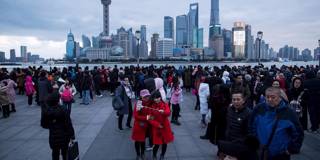China’s experience lifting hundreds of millions of people out of poverty in just a few decades holds important lessons. First and foremost, while randomized controlled trials and the types of targeted programs they assess may have a role to play in fighting inequality, the most powerful poverty-reduction tool is economic growth.
ANN ARBOR – This year’s Nobel Memorial Prize in Economic Sciences was awarded to Abhijit Banerjee, Esther Duflo, and Michael Kremer for their experimental approach to poverty reduction. In the Nobel Committee’s view, the economists’ use of randomized controlled trials (RCTs), a method adapted from medical sciences, to test whether specific interventions work has “considerably improved our ability to fight global poverty.”
But, while some celebrate the recognition of a new way to tackle an old problem, others doubt that “dividing this issue into smaller, more manageable questions,” as the Nobel Committee puts it, can really reduce poverty on a large scale. Conspicuously missing from this debate is the experience of China, which has accounted for more than 70% of global poverty reduction since the 1980s, the most successful case in modern history.
Over the last four decades, more than 850 million people in China have escaped poverty. Yet as Peking University’s Yao Yang notes, this had “nothing to do with RCTs,” nor did it involve giving handouts to the poor – instead, it was the result of rapid national development.

ANN ARBOR – This year’s Nobel Memorial Prize in Economic Sciences was awarded to Abhijit Banerjee, Esther Duflo, and Michael Kremer for their experimental approach to poverty reduction. In the Nobel Committee’s view, the economists’ use of randomized controlled trials (RCTs), a method adapted from medical sciences, to test whether specific interventions work has “considerably improved our ability to fight global poverty.”
But, while some celebrate the recognition of a new way to tackle an old problem, others doubt that “dividing this issue into smaller, more manageable questions,” as the Nobel Committee puts it, can really reduce poverty on a large scale. Conspicuously missing from this debate is the experience of China, which has accounted for more than 70% of global poverty reduction since the 1980s, the most successful case in modern history.
Over the last four decades, more than 850 million people in China have escaped poverty. Yet as Peking University’s Yao Yang notes, this had “nothing to do with RCTs,” nor did it involve giving handouts to the poor – instead, it was the result of rapid national development.